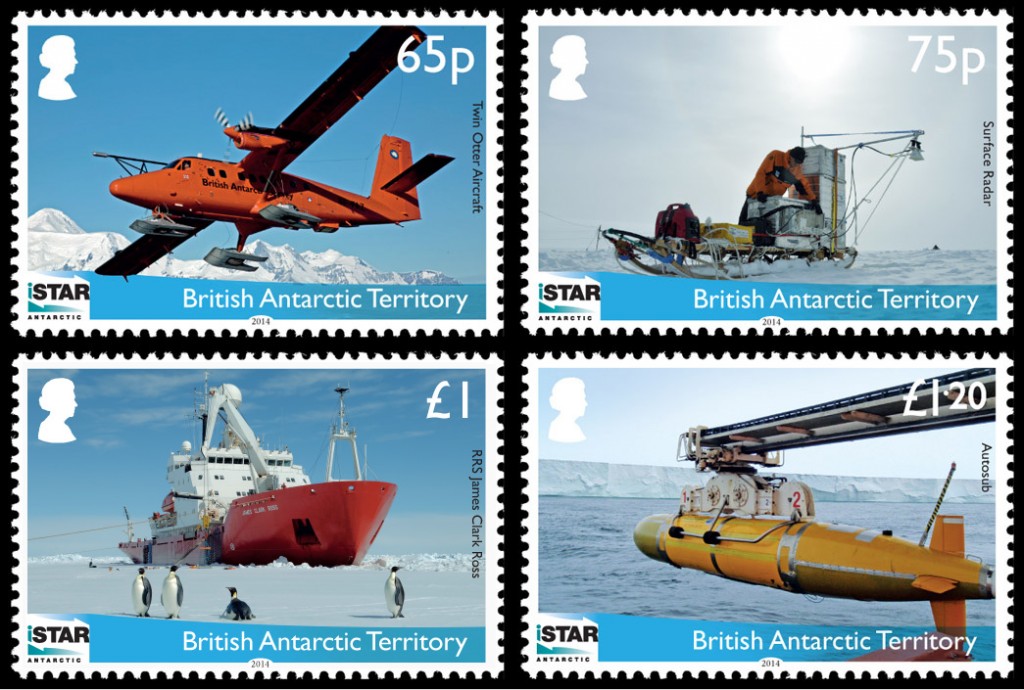The iSTAR programme, which is looking at the stability of Pine Island Glacier in Antarctica, is featured in a new set of British Antarctic Territory postage stamps. Four stamps have been printed showing different aspects of the programme’s first science season. They will be on sale at British research stations in Antarctica and the Falkland Islands.
iSTAR is an ambitious research programme funded by the Natural Environment Research Council (NERC) which brings together scientists from 11 UK Universities as well as the British Antarctic Survey (BAS). They aim to discover the reasons behind the recent rapid ice loss from Pine Island Glacier and whether this is likely to continue or slow down. The research will help inform forecasts about future sea-level rise. A group of 12 scientists has just arrived on the glacier for the second season.
The 65 pence stamp features one of the four DHC-6 Twin Otter aircraft operated by BAS. The Twin Otter is equipped with skis so it can land on the ice. The aircraft is a vital part of Antarctic operations enabling personnel and supplies to be flown to remote locations for field work. The Twin Otters are extremely versatile and can be modified to carry out airborne surveying.
The 75 pence stamp shows a photograph of a phase sensitive radio-echo sounder strapped to a Nansen sledge. The radar equipment uses high frequency microwaves to penetrate 50 metres below the surface of the glacier. It measures fine layers of snow which have accumulated over the years and will help improve satellite estimates of ice mass loss. The equipment was deployed in the field by Anna Hogg, of the University of Leeds.
BAS’ research ship, the James Clark Ross, graces the £1 stamp. Affectionately known as the JCR, she is ice-strengthened and can plough her way through sea ice a metre thick. Built in 1990, the ship is used to carry out research cruises in the Southern Ocean.
The £1.35 stamp shows the Autosub which was used to gather information from under the ice shelf. The vessel was designed and built at the National Oceanography Centre (NOC) in Southampton. Travelling at 6 km an hour it is capable of diving up to 1,600 metres deep. The data it collected early in 2014 will be used to create a 3D map of the ice above and the seabed below.
Damon Davies, of the University of Edinburgh, appears on the 75 pence stamp. He says:
“I’m thrilled to be featured on one of the stamps produced for the 2014/2015 Antarctic summer. Being part of the iSTAR programme has been an exciting and rewarding experience for me and it’s great that the efforts of all involved in this important research are being commemorated.”
Four different sets of stamps are usually issued each Antarctic summer. Visitors to the British Antarctic Territory can purchase the stamps on the Falkland Islands and at post offices at Port Lockroy and Rothera. They are available in the UK from reputable stamp dealers.

